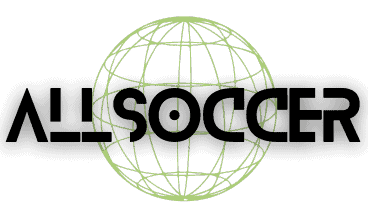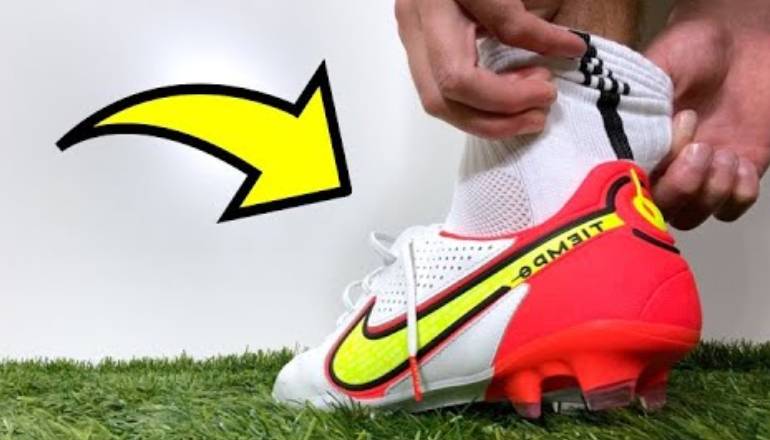How to Prevent and Treat Blisters Caused by Soccer Cleats?
Soccer cleats are a great way to get around the soccer field, but they can also be a source of blisters. Blisters are a common injury among soccer players, and they can be caused by a number of different things. Cleats are one of the most common culprits, as they can rub against the foot and cause irritation. There are a few things that you can do to prevent blisters from happening in the first place.
How do you Prevent Blisters on Heels from Soccer Cleats?
There are a few things you can do to prevent blisters on your heels from soccer cleats. First, make sure that your cleats fit properly. They should be snug but not too tight, and they should not rub or chafe your skin.
You can also wear socks that provide good padding, help to absorb sweat, and support your feet. For another, you apply a bandage or moleskin to any areas where you feel the cleats rubbing against your skin, which will also prevent blister pain.
For any new soccer shoes, you should break in your cleats gradually by wearing them for short periods of time at first, and gradually increasing the amount of time you wear them.
Finally, keep your feet dry and clean, and apply a lubricant to areas where your skin is prone to rubbing against the cleats. By following these tips, you can help prevent blisters on your heels from soccer cleats.
How do you Stop New Shoes from Giving you Blisters?
If you’re someone who’s prone to blisters, you know the drill: a new pair of shoes leads to a few days of discomfort as your feet adjust to the new fit. But there are a few things you can do to minimize the chances of getting blisters when breaking in a new pair of shoes.
First, try wearing socks with your new shoes. This will create an extra layer of protection between your foot and the shoe. If you don’t want to wear socks, try sprinkling some powder inside the shoe before putting it on. This will help absorb moisture and keep your feet dry.
When you first start wearing the shoes, take them slowly. Wear them for a few hours at a time and then take them off. This will give your feet a chance to adjust gradually to the new shoes. As your feet get used to the shoes, you can start wearing them for longer periods of time.
It’s also important to choose the right size shoe. If a shoe is too big, your foot will slide around inside and increase the chances of getting blisters. If a shoe is too small, it will put undue pressure on certain areas of your foot and also lead to blisters. So make sure you’re trying on shoes that fit properly before making a purchase.
By following these tips, you can hopefully avoid those pesky blisters the next time you break in a new pair of shoes.
How do you Wear Soccer Cleats with Blisters?
One of the most common questions we get asked is how to wear soccer cleats with blisters. The answer is actually pretty simple. Just make sure you have the right size! If your cleats are too big, they will rub against your skin and cause blisters. If they are too small, they will be uncomfortable and also cause blisters. So, getting the right size is key.
Once you have the right size, it is important to break in your cleats before wearing them in a game. Wear them around the house or during practice to get used to them. This will help prevent blisters when you do finally wear them in a game.
Try to keep the area clean and dry. You can also try using a bandage or moleskin to cover the blisters and prevent them from rubbing against your cleats. If the pain is still too much to handle, you may need to take a break from playing soccer until your blisters heal.
With these tips, you should be able to wear your soccer cleats with no problem, even if you do get a blister.
How to Treat Blisters from Soccer Cleats?
If you’ve ever gotten a blister from wearing soccer cleats, you know how painful they can be. Here are a few tips on how to treat blisters so you can get back on the field as soon as possible.
- Clean the area around the blister with soap and water. This will help to prevent infection. Then, carefully puncture the blister with a sterile needle. This will help the fluid drain out and relieve some of the pressure.
- Apply an antibiotic ointment to the area and cover it with a bandage. This will protect it from further rubbing and irritation. Be sure to change the bandage regularly to keep the area clean and dry.
- If the pain is severe, you may want to take over-the-counter pain medication like ibuprofen.
- Give your blister a few days to heal. Once it has healed, make sure to thoroughly clean the area again before putting your cleats back on.
By following these simple steps, you can quickly and easily treat blisters from soccer cleats.
How do Soccer Players Deal with Blisters?
It’s no secret that soccer players deal with a lot of blisters. In fact, it’s something that almost all players have to deal with at some point in their careers. There are a few different ways that players can deal with blisters, and it really depends on the severity of the blister.
For minor blisters, players can usually just wrap them up with some tape and continue playing. However, for more severe blisters, players may need to take a break from playing and let the blister heal. Here are a few tips on how to deal with blisters as a soccer player.
- If you have a minor blister, try wrapping it up with some tape. This will help protect it from further irritation.
- If you have a more severe blister, you may need to take a break from playing. Letting the blister heal is the best way to prevent it from getting worse.
- You can also try using a bandage or moleskin to cover the blister. This can help relieve some of the pain and pressure.
- If the blister is particularly painful or large, you may need to see a doctor or medical professional. They can help drain the blister and give you further instructions on how to care for it.
Final Remarks
Blisters can be a pain, but luckily there are ways to deal with them. The most important thing is to listen to your body and take care of the blister accordingly. With proper care, you’ll be back on the field in no time.
This article provides tips on how to prevent and treat blisters caused by soccer cleats. By following these tips, you can help keep your feet healthy and avoid painful blisters.
Related posts
